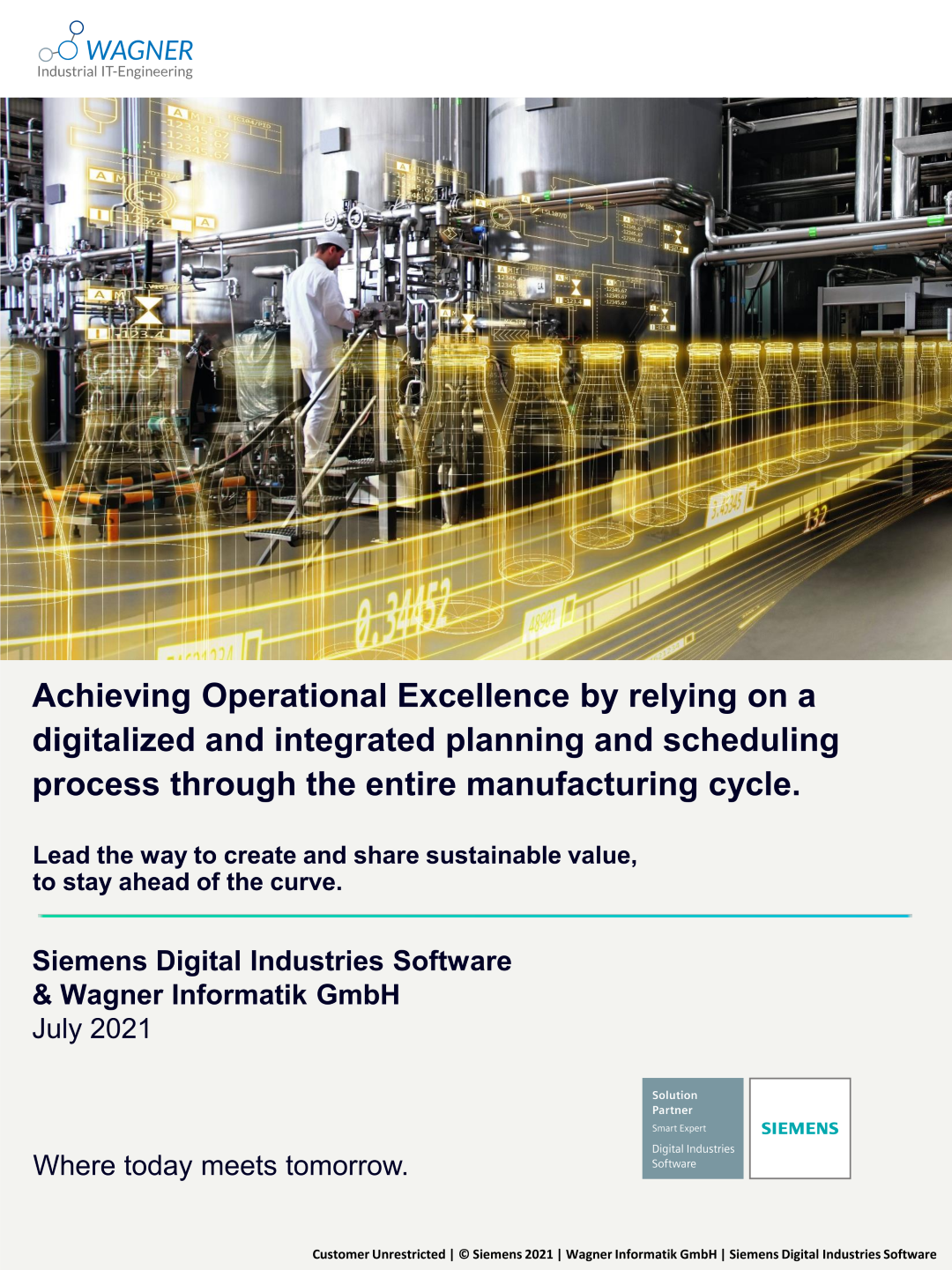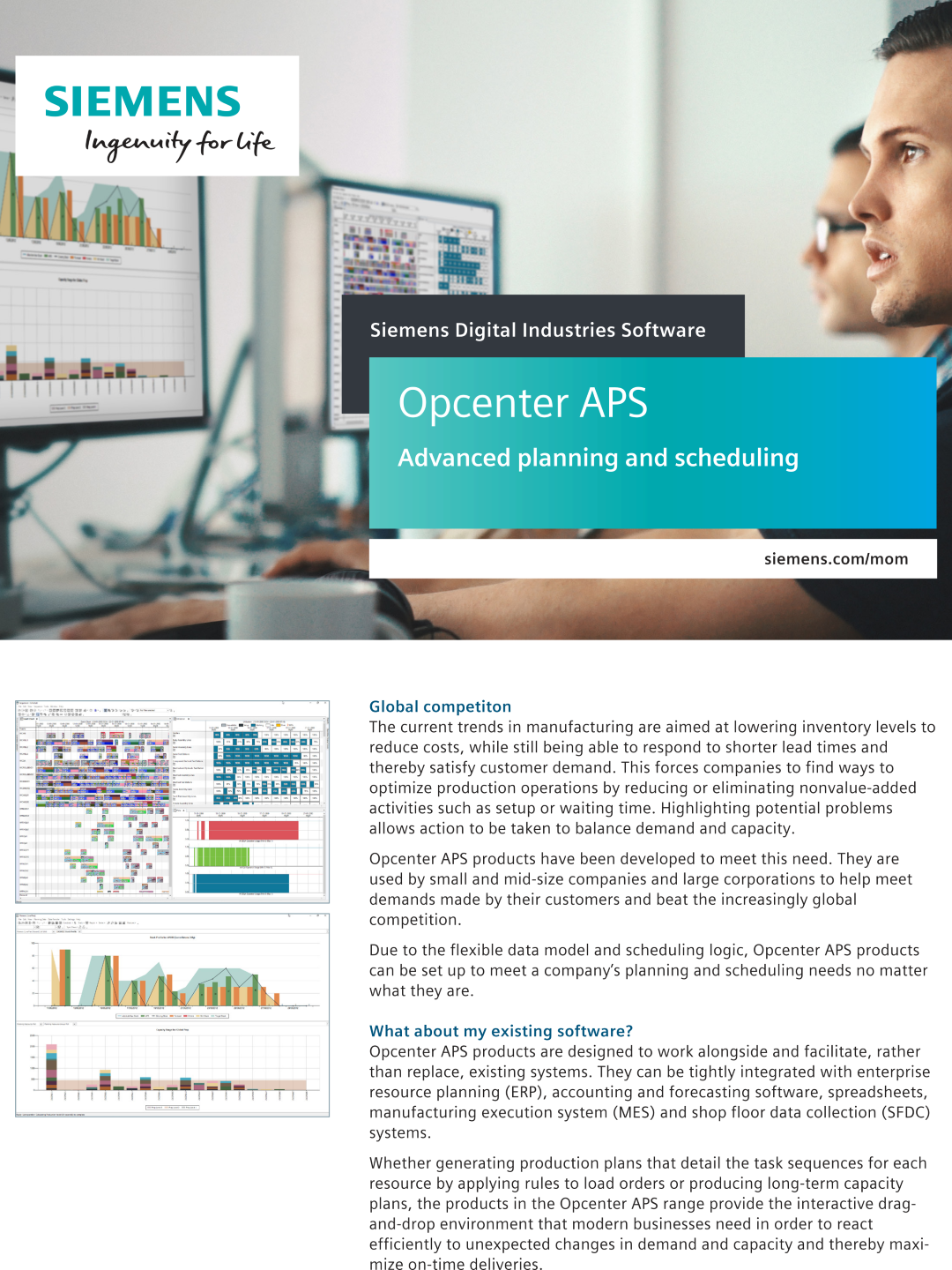
Production (detailed) planning and scheduling
Advanced planning and scheduling (APS) software is essential to anticipate manufacturing resource needs. Strategic planning and accurate schedules are crucial to coordinate the efficient use of people, materials and machines. Whether you're optimizing your current operations or setting the stage for your next growth phase, the ability to optimize the production process with manufacturing planning software will help you make informed decisions and stay ahead of the competition.
For more than 30 years, Opcenter APS (formerly Preactor) has been the production planning software of choice for thousands of manufacturers worldwide. The software solution is not only industry-specific, but also established in numerous domains and all important sectors. It is an essential step in achieving operational excellence. Their ability to integrate with Manufacturing Execution Systems (MES), ERP (Enterprise Resource Planning) systems and the supply chain ensures a highly efficient manufacturing process. The result is superior customer service and increased profitability.
"What about my existing software?"
Opcenter APS products are designed to work with and facilitate existing systems, rather than replacing them. They can be integrated with existing Enterprise Resource Planning (ERP), Manufacturing Execution System (MES), accounting and forecasting software, shop floor data collection and spreadsheets.

Opcenter Planning vs Scheduling - What's the Exact Difference?
Opcenter Planning (PL)
- Planning can be run in finite or infinite capacity mode, and planning periods can be days, weeks, months, or a combination of all three. Parameters can be set for each item code, allowing different calculations for each item. For example, some products may be in make-to-stock mode while others are in make-to-order mode.
- When used in conjunction with an Opcenter scheduling system, detailed production plan information can be sent back to the scheduling system. The master production plan (MPS) can then be recalculated, using the production plan as the basis for new results.
Opcenter Scheduling (SC)
- The purpose of planning in manufacturing is to minimize production time and costs by telling a manufacturing facility what to make, when, and what personnel and equipment to use.
- Detailed production planning aims to maximize operational efficiency and reduce costs. Detailed planning software is an important tool for many companies because it can have a major impact on the productivity of a process.
What is the difference between planning and scheduling/detailed planning
- The basic difference between planning and scheduling software is that planning systems are divided into so-called "buckets" (monthly, weekly, daily).
- Scheduling systems do not use aggregation on "buckets", but generate (order) sequences and can or create mailing lists. Assigning an operation to a resource for a precise time period is a key capability to achieve operational efficiencies and optimize performance.
- Detailed planning uses a shorter time horizon and much more detailed consideration of the restrictions than a planning system.
Added value of Opcenter Planning
- Decision support for long-term strategy
- Production load balancing and smoothing
- Quick creation of master production plans
- Quick response to changes in demand
Added value of Opcenter Scheduling
- Better resource utilization
- Reduction of setup and changeover times
- Reduction of inventory levels
- Detailed visibility of production utilization
- Faster modeling of "what-if" scenarios
- Improved on-time delivery

MOM
Key benefits of advanced planning and scheduling software:
- Optimization of production processes
- Reduce or remove non-value-adding activities (such as setup or waiting time)
- Reduce late delivery due to manufacturing delays
- Warnings when demand exceeds capacity
- Lower production costs
- Ability to plan for future capacities
- Lower operating costs due to the management of planning changes
Now consider the two components of the APS software in detail:
Blog posts about #aps














